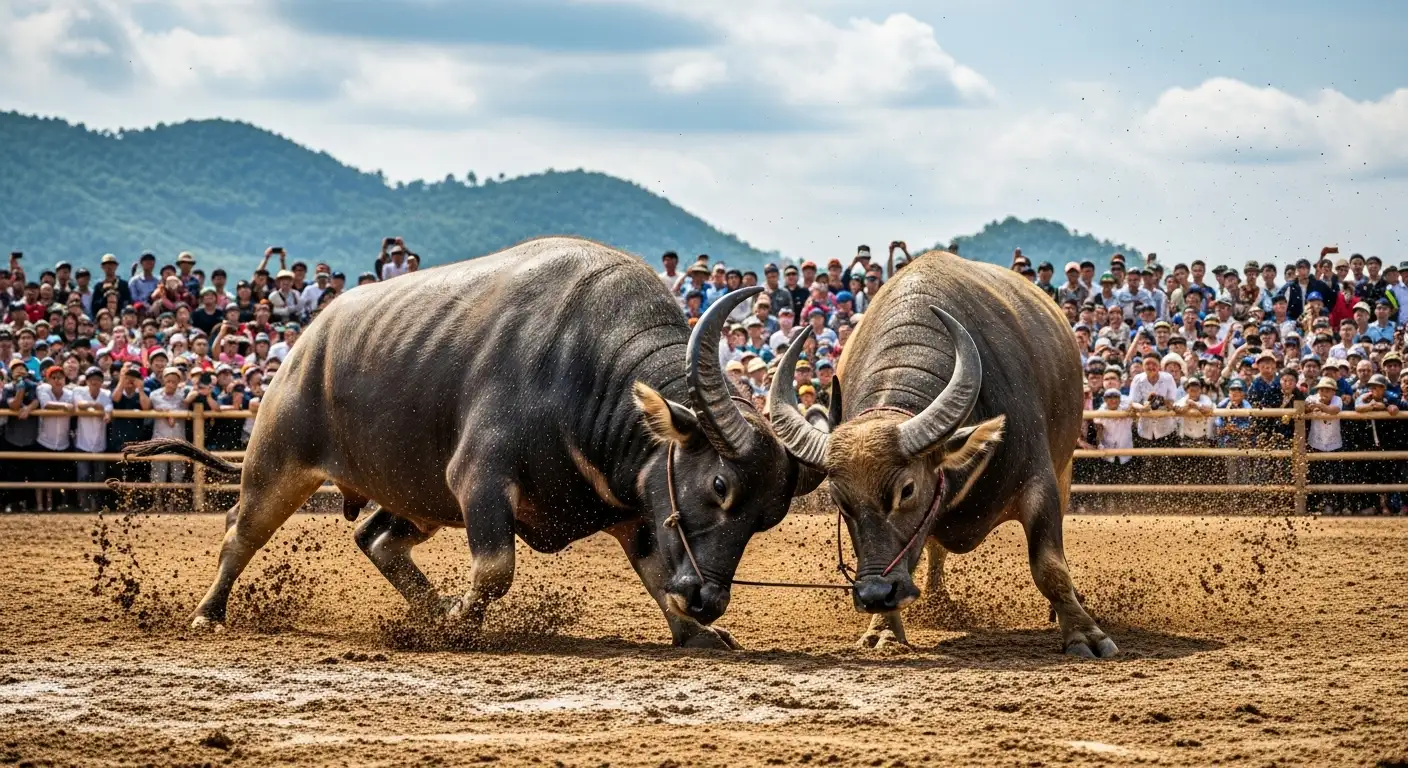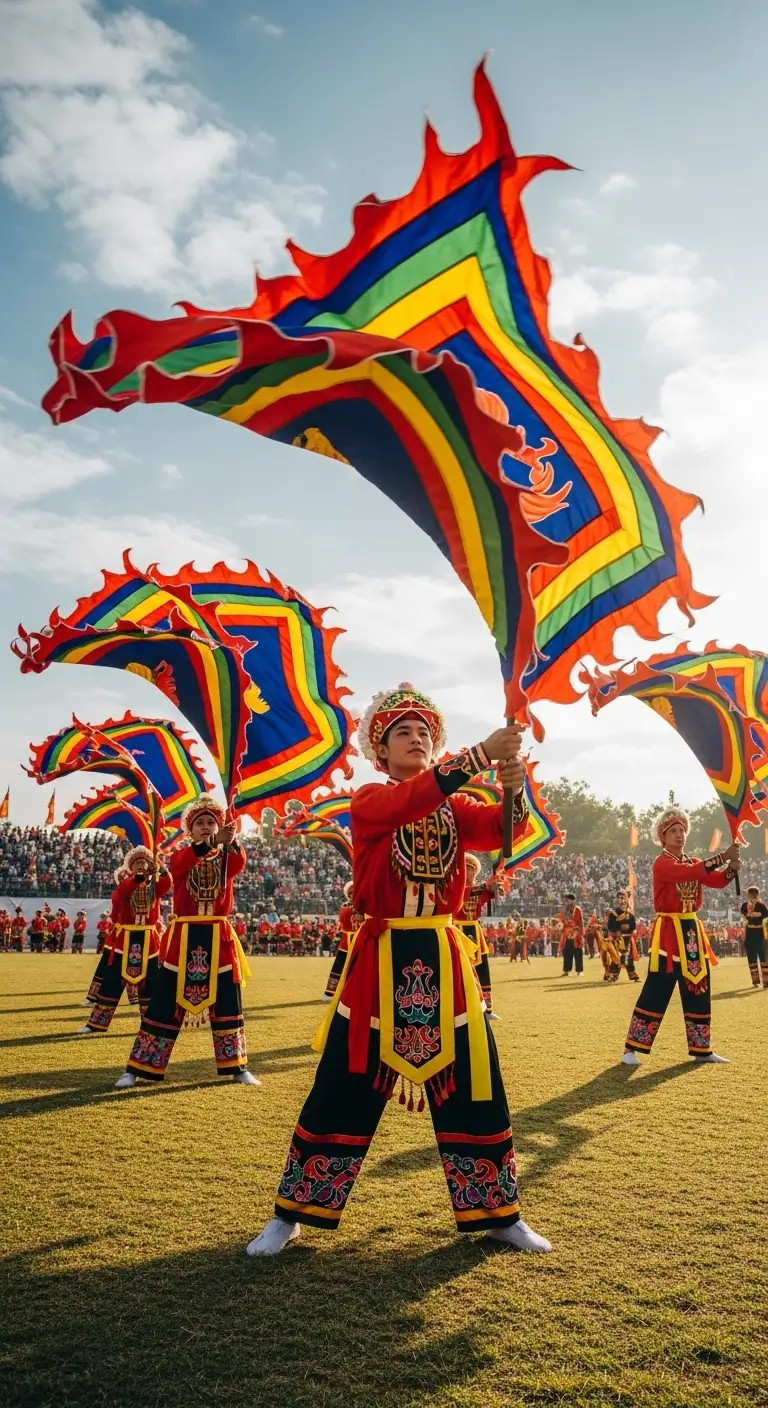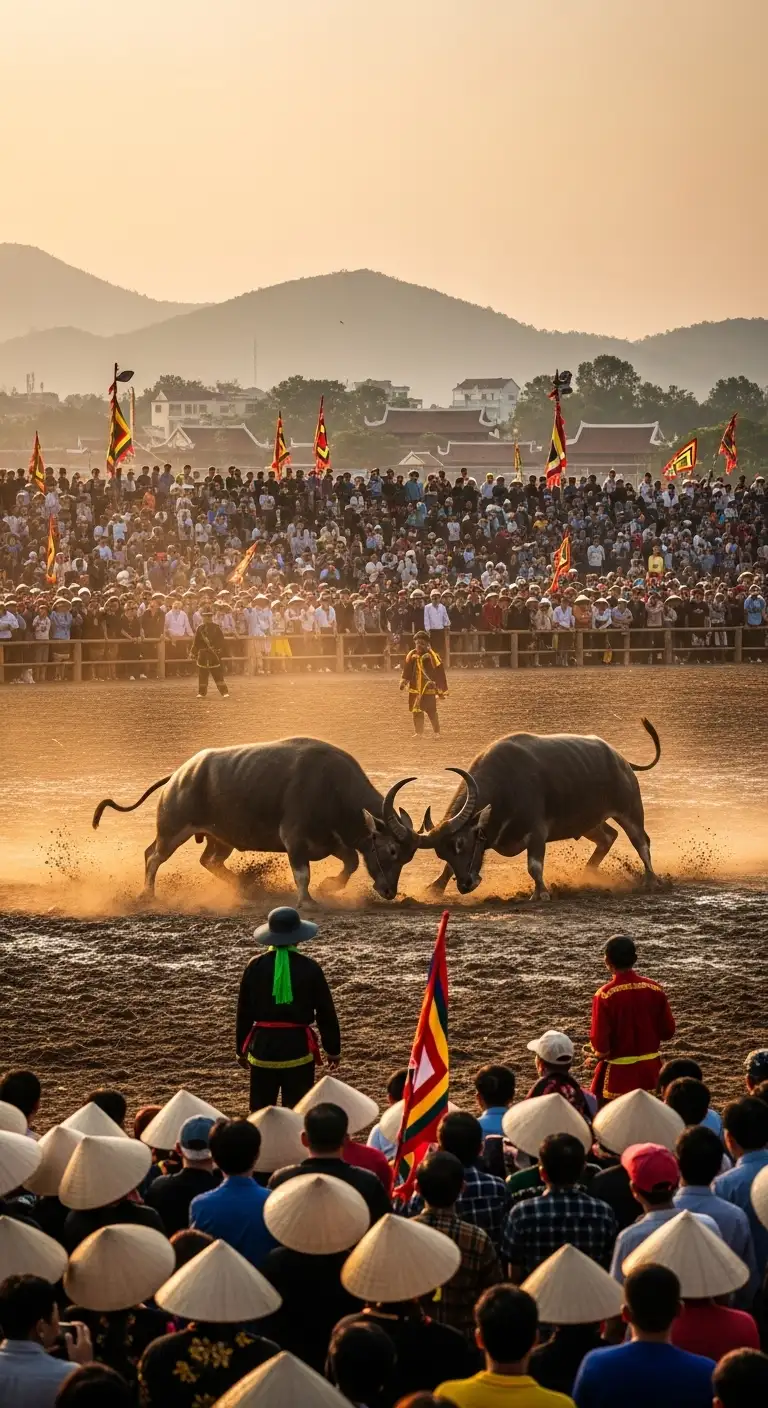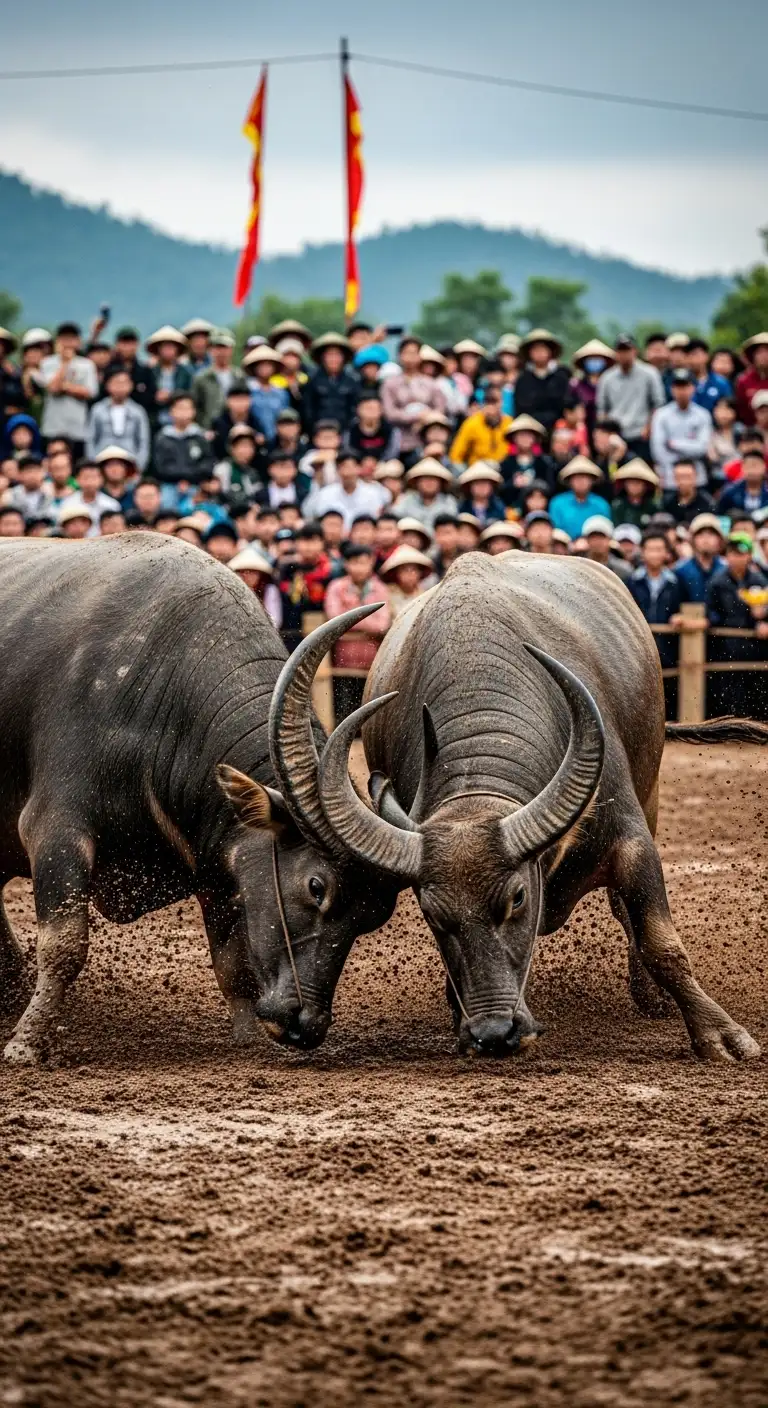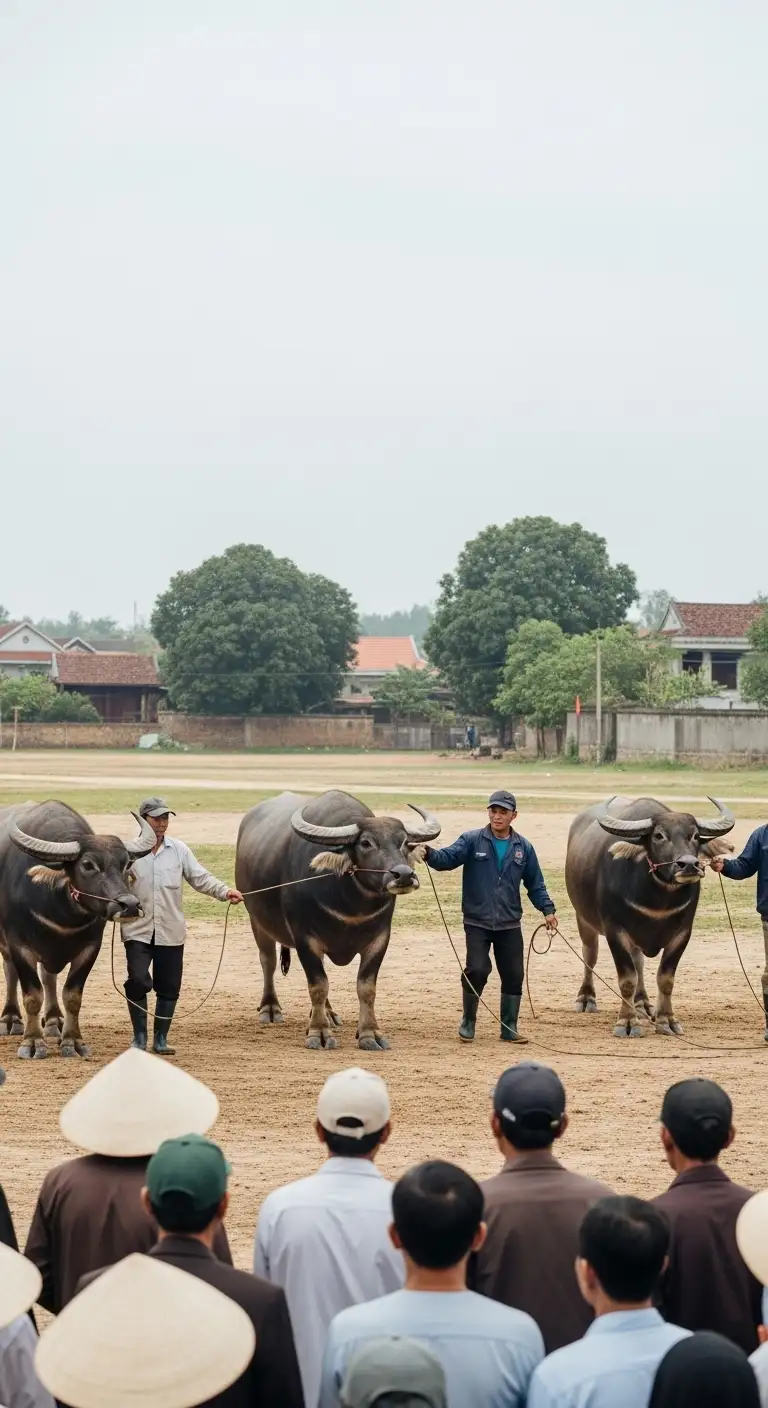Quick Facts
| Data Field (Title) | Content | Icon/Note |
|---|---|---|
| Official Vietnamese Name | Lễ hội chọi trâu Đồ Sơn | Literally: 'Do Son Buffalo Fighting Festival'. |
| Location | Đồ Sơn District, Hải Phòng City, Northern Vietnam. | A coastal city with a strong maritime and martial heritage. |
| Traditional Timing | Annually on the 9th day of the 8th Lunar Month (usually late September or early October). | The date is highly fixed, though initial elimination rounds happen earlier. |
| Significance | A cultural ritual linked to Water God worship, praying for calm seas, safety, and prosperity. | |
| Status | Recognized as a National Intangible Cultural Heritage of Vietnam (since 2012). |
I. Overview: A Ritual of Strength and Spirit
Ancient Maritime Tradition
The Do Son Buffalo Fighting Festival is one of the most distinctive and highly anticipated traditional events in Northern Vietnam. Originating as far back as the 18th century, the festival is a powerful blend of agricultural reverence, maritime spiritual belief, and martial spirit.
Locals in Do Son believe the buffalo fight honors the Water God and the Tutelar God of the village. The village whose “Sir Buffalo” (Ông Trâu) wins the final match is believed to be blessed with an entire year of good luck, bountiful fishing hauls, and prosperity.
The Martial Spirit
The festival is a fierce showcase of the coastal people’s bravery, strength, and desire to “conquer nature and master the seas.” Every activity, from the procession dances to the fight itself, is imbued with a competitive, disciplined energy that reflects the resilience of the Do Son community.
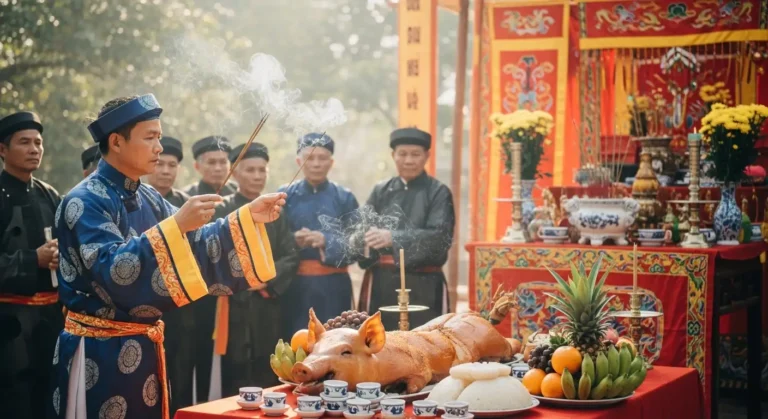
II. Festival Activities: From Selection to Spectacle
The festival involves an elaborate process that spans several months, culminating in the main event on the ninth day of the eighth lunar month.
1. The Sacred Preparation
Buffalo Selection: Beginning in the 5th and 6th lunar months, buffalos (Ông Trâu or “Sir Buffalo”) are meticulously chosen based on stringent criteria: age (4-5 years old), impressive appearance, wide chest, long neck, and powerful, bow-shaped horns.
Training and Care: The selected buffalos are carefully fed, trained in isolation, and treated with immense reverence—receiving special status as the village’s spiritual representative.
Ritual Offerings: Before the main fight, the buffaloes are taken to the communal hall to participate in a solemn worship ceremony for the Tutelar God.
2. The Main Day Spectacle
Procession: The day begins with a colorful and dramatic procession. Each buffalo, draped in red cloth and with red bands around its horns, is led by 24 strong young men, dressed in traditional costumes. The parade is accompanied by the ebullient sounds of drums and gongs.
Flag Dance: The young men perform a rhythmic, vigorous flag dance in the arena, creating a highly charged atmosphere that is believed to energize the combatants.
The Fight: The two “Sir Buffaloes” are led to opposite sides of the ring. At a signal, their handlers release the ropes, and the buffaloes rush towards each other, engaging in an intense battle of skill and brute force. Spectators enthusiastically cheer the strategic head-butting, locking of horns, and powerful pushes. The matches are fought in elimination rounds until the champion is crowned.
3. The Ritual Feast
After the final match, all the participating buffaloes (including the champion) are traditionally sacrificed and offered to the village’s Tutelar God. The meat is then shared in a communal feast, symbolizing solidarity, good fortune, and the community’s shared bounty for the coming year.
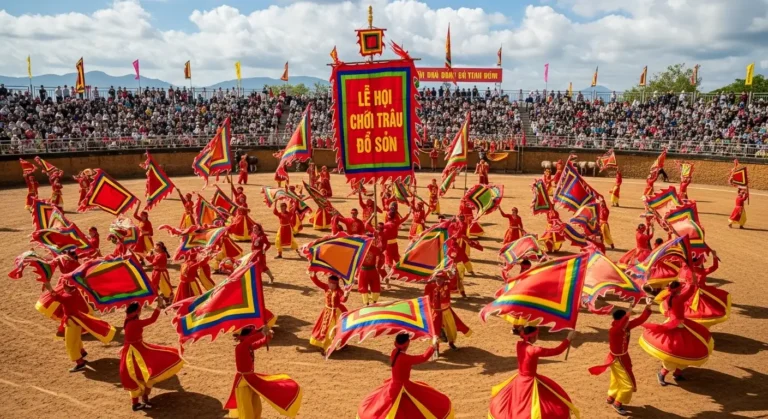
III. Visitor Information
| Guide Field | Details |
|---|---|
| Getting There | Do Son is a seaside town located about 20 km from the center of Hải Phòng City, making it an accessible day trip destination. |
| Crowds | This is a massive event, attracting tens of thousands of spectators. Arriving early is crucial to secure a good spot inside the central stadium. |
| Atmosphere | Expect a vibrant, noisy, and high-energy atmosphere. The crowd's excitement and the rhythmic sound of the drums are integral to the experience. |
| Controversy | The tradition of sacrificing the buffaloes after the fight is a cultural rite, but it can be controversial to some international visitors. It is advised to research and approach the event with cultural sensitivity and respect for the local tradition. |
